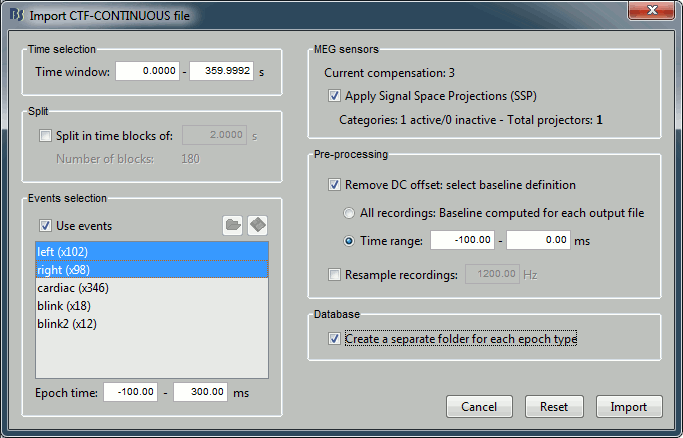|
⇤ ← Revision 1 as of 2013-01-03 19:58:09
Size: 1340
Comment:
|
Size: 1571
Comment:
|
| Deletions are marked like this. | Additions are marked like this. |
| Line 2: | Line 2: |
| Intro. | This tutorial fills the gap between the previous tutorial (review and clean continuous recordings), and the introduction tutorials (source analysis of an evoked response). It explains how to apply some more epoch the recordings, apply s |
Epoching and averaging
This tutorial fills the gap between the previous tutorial (review and clean continuous recordings), and the introduction tutorials (source analysis of an evoked response). It explains how to apply some more epoch the recordings, apply s
Contents
Import in database
The raw file viewer provides a rapid access to the recordings and can be a very a very useful tool. But most of operations cannot be performed directly on the raw files: all the pre-processing functions, averaging, time-frequency analysis and statistical tests can only be applied on blocks of data that are saved in the database (ie. "imported"). After reviewing the recordings and editing the event markers, you have to "import" the recordings in the database to go with further analysis. The two following operations produce the same result:
In the Event tab: select the menu Import > Import > Import in database.
In the database tree: Right-click on the node "Link to raw file" > Import in database.
You could also right-click on the subject node > Import EEG/MEG, and select the tutorial FIF file, exactly as presented in the the previous tutorials. But this operation would not give you access to your modified events list, it would use only the events that were already defined in the raw file.
For details about the "Import file" window and the associated processes, please refer to the next tutorial Import and process Neuromag raw recordings.

